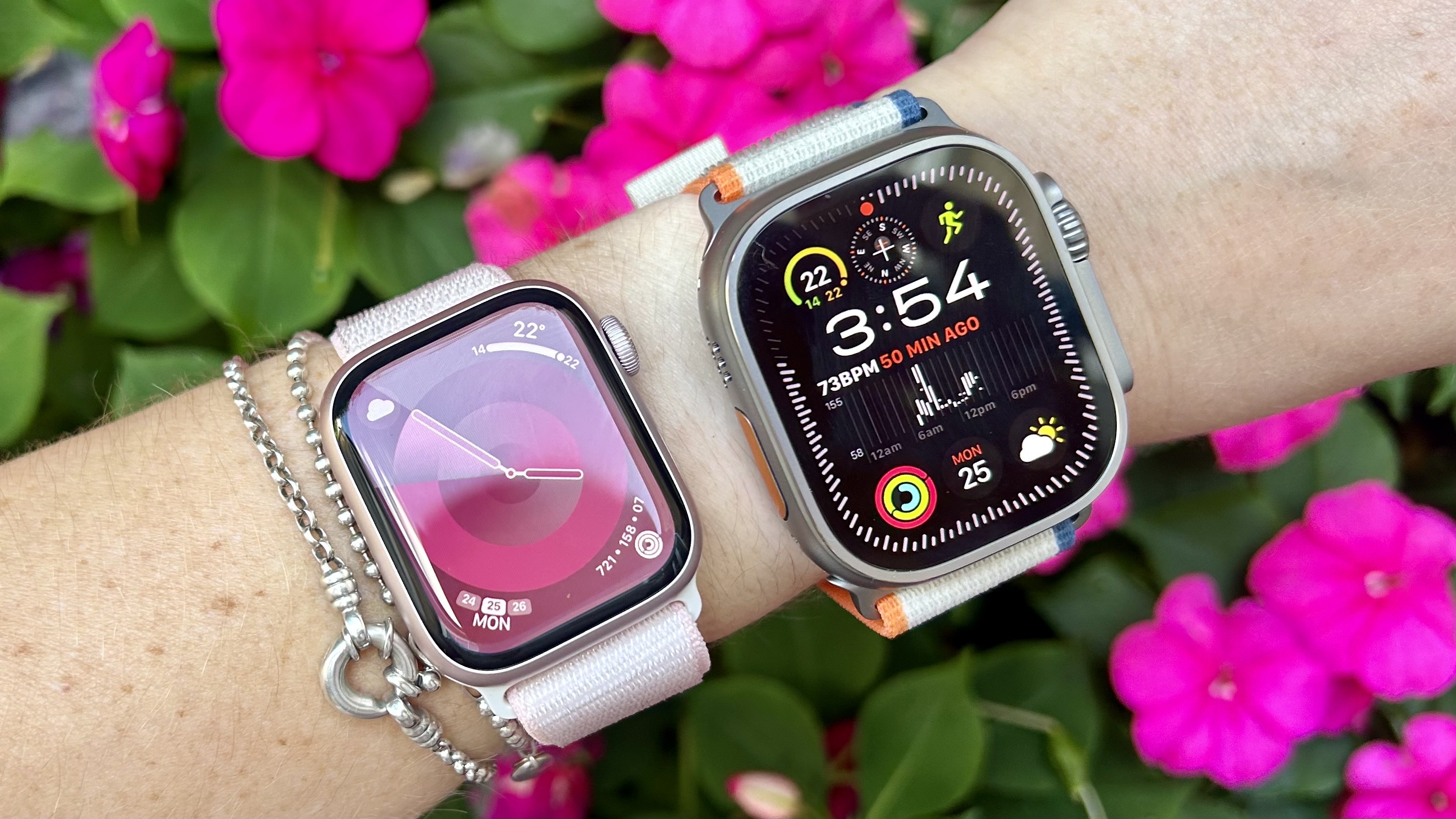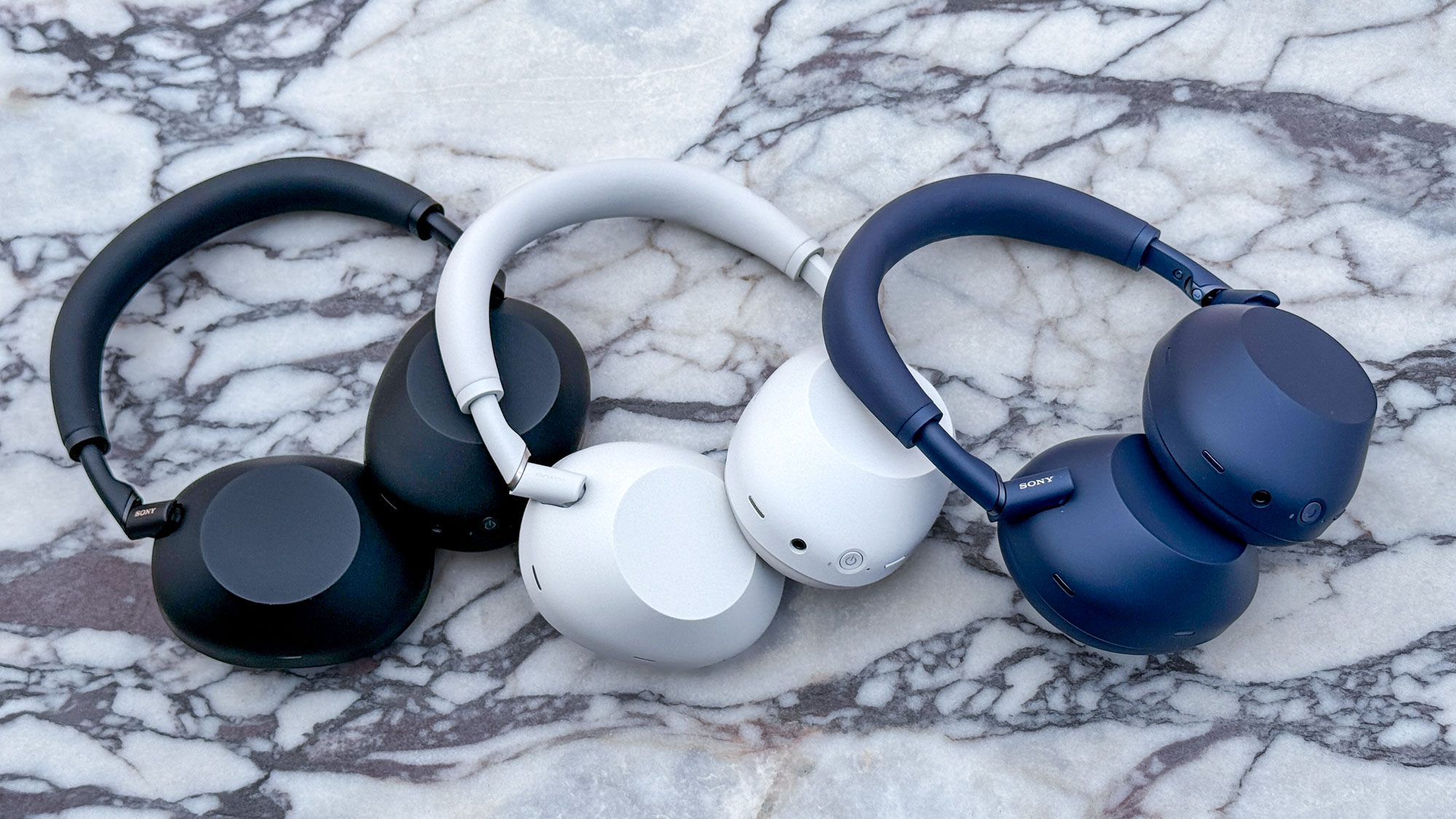I walked 11,000 steps with Apple Watch Ultra 2 and Apple Watch Series 9 — and one was more accurate
Here’s what happened when I put the two watches to the test

I’ll start with the obvious — you don’t buy one of the best Apple watches purely to track your steps. In fact, the newly-released Apple Watch Ultra 2 and Apple Watch Series 9 are two of the best smartwatches on the market, and do a lot more than count steps and calories. Both are like wearing an iPhone on your wrist and thanks to the built-in GPS, watchOS 10 fitness features, and advanced heart rate and skin temperature sensors, you could easily train for a marathon, or take up a new sport with either watch on your wrist.
That said, if you are interested in counting your steps, you might be wondering whether there was any difference in accuracy between the Apple Watch Ultra 2 and the Apple Watch Series 9. To find out more, I strapped both to my wrist and set out on a few walking tests. Read on to find out what happened.
As a reminder, no fitness tracker will be 100% accurate when it comes to estimating the amount of steps you’ve taken. But how does the Apple Watch count steps? Your Apple Watch tracks your arm motion using the built-in accelerometer, to estimate how many steps you’ve taken. For best results, you should allow the arm you’re wearing your watch on to swing naturally as you move, as well as calibrating your watch to improve the accuracy of the estimations.
Over time, your Apple Watch will use recorded data to get a more accurate understanding of your average running and walking pace. Yet, you can also manually calibrate your watch, which will help it learn your stride, and therefore be more accurate when GPS is limited or unavailable. Here’s more on how to calibrate your Apple Watch.
I walked 11,000 steps with the Apple Watch Ultra 2 and the Apple Watch Series 9 — here's the results
So, what happened when I walked 11,000 steps with both watches? In order to test the accuracy of both watches, I strapped them both to my wrist and manually counted 8,000 steps on my first walk, which I thought would be enough for this test. To avoid losing count as I walked, I used a $6.99 tally counter tool from Amazon and clicked each time I took a step. When I got home, I compared the data from the two watches.
I’ve learned in the past that Apple makes it nearly impossible to view your exact amount of steps per workout. Sure, you can see your daily total in the Fitness app, and you can find hourly step data in the Health app, but to make things a little less confusing, I downloaded the StepsApp Pedometer app on both Apple Watches.
Walk One: Results
- Manual step count: 8,000 steps
- Apple Watch Series 9: 7,730 steps, 3.8 miles, 17:34 min/mile pace, 274 calories burned
- Apple Watch Ultra 2: 7,990 steps, 3.8 miles, 17:34 min/mile pace, 256 calories burned
From this data, you could assume the Apple Watch Ultra 2 is more accurate, however, I realized once looking at the data that there was one big difference between the two watches — the Ultra 2 was connected to my iPhone 14, whereas the Apple Watch Series 9 wasn’t.
Get instant access to breaking news, the hottest reviews, great deals and helpful tips.
Apple only lets you have one watch connected to your iPhone at one time, and you can opt to manually switch between watches, or enable Auto Switch, which automatically connects the watch to your iPhone when you raise your wrist.
Although both watches have built-in GPS, I wondered whether the watch was also using the accelerometer on my iPhone to more accurately estimate my step count. The next day, I decided to re-create the test, this time with my Series 9 connected to my iPhone.
Walk Two: Results
- Manual step count: 2,000 steps
- Apple Watch Series 9: 1980 steps, 0.9 miles, 18:50 min/mile pace, 64 calories burned
- Apple Watch Ultra 2: 1974 steps, 0.9 miles, 18:35 min/mile pace, 62 calories burned
Once again, it appears that the Apple Watch connected to my iPhone was more accurate, although it was interesting to see the estimated pace was different between the two watches. The Apple Watch Ultra 2 has multi-band GPS, so is likely to be more accurate than the Series 9 from a GPS perspective.
For my final test, I decided to put my iPhone on flight mode, so neither watch was connected.
Walk Three: Results
- Manual step count: 1,000 steps
- Apple Watch Series 9: 983 steps, 839 yds, 17:25 min/mile pace, 32 calories burned
- Apple Watch Ultra 2: 963 steps, 883 yds, 17:53 min/mile pace, 32 calories burned
Again, a slight difference in data. So what can I conclude from all my testing? Firstly, both watches are pretty accurate when it comes to estimating how many steps I’ve taken. But to really improve the accuracy, the Apple Watch needs to be connected to your iPhone. I’ll continue to test both watches side-by-side, and plan to do similar tests without my phone to look at the GPS tracking of both.
Once again, it’s important to add that both of these watches do a lot more than count your steps, and this article isn’t to say one is better than the other. There are some big differences between the two watches — read more in our Apple Watch Series 9 vs Apple Watch Ultra 2 face-off here.
It’s also worth pointing out that counting steps alone isn’t the best metric when it comes to getting fitter and losing weight. That said, it’s a good place to start. Although the 10,000 steps per day message started as a marketing campaign, a review of 32 studies, published in the International Journal of Behavioral Nutrition and Physical Activity found that “10,000 steps/day is a reasonable target for healthy adults.”
10,000 steps is the equivalent of walking around 5 miles per day, which might sound like a lot, but might mean taking the stairs, not the elevator, getting off the subway a couple of stops early, or meeting a friend for a walk at lunch, not sitting in a coffee shop. There are a number of benefits of walking more, including losing weight, building muscle, and feeling less stressed. Here’s what 30-minutes of walking each day can do for your body.
More from Tom's Guide
- The best walking workouts to add to your routine
- I leveled up my daily walk with this walking workout — and loved it
- Can walking give you abs? We ask an expert

Jane McGuire is Tom's Guide's Fitness editor, which means she looks after everything fitness related - from running gear to yoga mats. An avid runner, Jane has tested and reviewed fitness products for the past five years, so knows what to look for when finding a good running watch or a pair of shorts with pockets big enough for your smartphone. When she's not pounding the pavements, you'll find Jane striding round the Surrey Hills, taking far too many photos of her puppy.
